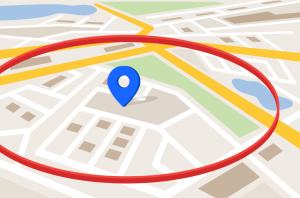
In the fast-paced digital landscape, businesses are constantly seeking innovative ways to reach their target audience and maximize their advertising ROI. One strategy that has proven to be highly effective is geo-targeting advertising. This powerful tool allows businesses to tailor their marketing messages to specific geographic locations, ensuring that their content reaches the right people at the right time. In this blog post, we’ll explore the ins and outs of geo-targeting advertising and how it can be a game-changer for your marketing efforts.
Understanding Geo-Targeting Advertising
Geo-targeting advertising, also known as location-based advertising, involves delivering targeted messages or promotions to users based on their geographic location. This can be achieved through various technologies, such as GPS, IP addresses, Wi-Fi signals, and mobile data, allowing advertisers to pinpoint users with remarkable accuracy.
The primary goal of geo-targeting is to enhance relevance and increase the likelihood of engagement by tailoring content to the specific needs and interests of users in a particular location. This level of precision can significantly improve the overall effectiveness of an advertising campaign.
Personalization Leads to Engagement
One of the key advantages of geo-targeting advertising is the ability to personalize content for different regions. By understanding the unique characteristics and preferences of specific locales, businesses can craft messages that resonate more deeply with their target audience. For instance, a retail brand can promote winter clothing in colder regions while highlighting summer apparel in warmer areas.
This personalized approach fosters a sense of connection between the brand and the audience, leading to higher engagement rates. Users are more likely to respond positively to messages that address their local concerns, making geo-targeting an invaluable tool for building brand loyalty.
Improved Conversion Rates and ROI
The precision offered by geo-targeting not only increases engagement but also contributes to higher conversion rates. When users receive ads that align with their immediate needs and surroundings, they are more likely to take action, whether it’s making a purchase, visiting a store, or interacting with the brand online.
Moreover, the improved relevance of geo-targeted ads leads to a more efficient use of advertising budgets. Instead of broadcasting messages to a broad and diverse audience, businesses can focus their resources on specific geographic areas where their target customers are concentrated. This targeted approach ensures that marketing dollars are spent where they are most likely to generate a positive return on investment (ROI).
Tailoring Strategies for Different Platforms
Geo-targeting advertising is not limited to a single platform; it can be applied across various channels, including social media, search engines, and mobile apps. Each platform offers unique opportunities and challenges, requiring businesses to tailor their strategies accordingly.
For example, on social media platforms like Facebook and Instagram, businesses can create location-specific campaigns to target users in specific cities or neighborhoods. This allows them to showcase products or services that are particularly relevant to the local community. In contrast, search engine advertising can leverage geo-targeting to display relevant ads to users based on their search queries and geographic location.
Overcoming Challenges and Ensuring Privacy
While geo-targeting advertising offers numerous benefits, it is essential to navigate potential challenges and address concerns related to user privacy. Striking the right balance between personalized advertising and respecting user privacy is crucial for maintaining trust and compliance with regulations.
Businesses must be transparent about the data they collect and how it will be used for geo-targeting purposes. Implementing robust data protection measures and obtaining explicit user consent can help build trust and ensure that customers feel secure while interacting with geo-targeted ads.
Conclusion
In the ever-evolving landscape of digital marketing, geo-targeting advertising stands out as a dynamic and effective strategy for reaching the right audience with precision. By tailoring messages to specific geographic locations, businesses can enhance relevance, increase engagement, and ultimately drive better results from their advertising efforts. As technology continues to advance and consumer expectations evolve, mastering the art of geo-targeting will be a key differentiator for businesses looking to stay ahead in the competitive world of digital marketing.
Yellow Dog Website Design can help you get started in Geo-Targeted Advertising, set up a free consultation today!
